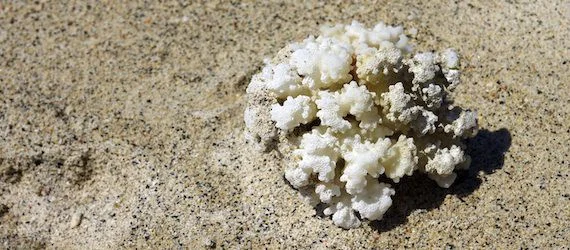New research has refined sea coral properties, making it more compatible with natural bone and paving the way for it to be used more extensively in bone grafting procedures.
By partially converting calcium carbonate―found in the exoskeleton of sea coral―into coralline hydroxyapatite (CHA), the refined material, called coralline hydroxyapatite/calcium carbonate (CHACC), has been shown to 'considerably improve' the outcome of bone grafts in 16 patients.
Published in IOP Publishing's journal Biomedical Materials, this small clinical study has shown that within four months, bone healing was observed in each of the patients and that the CHACC had fully biodegraded after two years.
Using sea coral-derived CHA as a successful bone graft material is nothing new, however as it does not fully biodegrade, its use has been limited to specific bones.
According to the corresponding author of the research Zhidao Xia from Swansea University, their methods have significantly enhanced the outcome of bone grafts. As they utilise the partial conversion technique, the biodegradable composition from natural coral is reserved. It acts in a most similar way to commercially available CHA for conductive bone regeneration, however the superior biodegradation properties are compatible with the host tissue's natural bone turnover process.
Xia went on to explain that when biomaterials do not biodegrade and remain in skeletal tissue, they have the potential to continuously cause problems in the patient. Citing an extreme condition, Xia pointed out that the different mechanical properties of the artificial bone graft could be responsible for causing a re-fracture or become a source for bacterium growth in infection.
The use of CHACC could evolve into a promising option to an autograft, a procedure that utilises pieces of bone from another part of the patient's body in order to regrow new bone in the injured area. Apart from the fact that autograft only has a limited stock, it can also cause pain, discomfort and long-term impairment in the area from which bone has been excised.
As part of their research the team, originating from the UK and China, harvested sea coral from South China and partially converted the calcium carbonate into CHA to form CHACC.
They describe in their report that the CHACC composition, containing 15% of CHA in a thin layer around the calcium carbonate, has the strong, porous structure that has made CHA commercially successful, but that in addition, it contains considerably superior biodegrading properties to support natural bone healing.
In their study, the scientists constructed CHACC and tested its chemical and physical properties using a number of spectroscopic and microscopic techniques. Following this, the CHACC was combined with human mesenchymal stem cells, mixed, and implanted subcutaneously in mice for 10 weeks. The results showed that new bone formation was visible on the surface of the CHACC.
A preliminary clinical study included 16 patients (11 male and five female) with a range of four different bone defects, who were surgically implanted with CHACC. Results yielded clinical bone healing four months following the intervention and the majority of the implanted CHACC degraded within 24 months in each of the patients.
A slow and complex process, bone remodeling is a process in which old bone is constantly replaced by new bone tissue. In the case of fracture healing, the entire remodelling period can last between three and five years depending on the individual, hence in order to make a synthetic bone graft successful, it must biodegrade within a time frame which consistent with the natural bone remodelling cycle.
Acknowledging that more progress is needed until the material can rival the benefits of an autograft and be benefit the several million people globally who undergo bone grafting procedures each year, the researchers were optimistic; and Xia concluded that although the study had promising results, the CHACC material did not contain a bone organic matrix, living cells and the ability to induce, rather than conduct, new bone formation. Hence, the team sees their future work as a combination of controlled growth factor delivery and stem cell technology, with the aim to develop an even better solution for bone graft materials.
Source: Science Daily
30 November 2013
Latest Articles
Research, bone grafting
New research has refined sea coral properties, making it more compatible with natural bone and paving the way for it to be used more extensively in bone gr...


![Tuberculosis Diagnostics: The Promise of [18F]FDT PET Imaging Tuberculosis Diagnostics: The Promise of [18F]FDT PET Imaging](https://res.cloudinary.com/healthmanagement-org/image/upload/c_thumb,f_auto,fl_lossy,h_184,q_90,w_500/v1721132076/cw/00127782_cw_image_wi_88cc5f34b1423cec414436d2748b40ce.webp)







